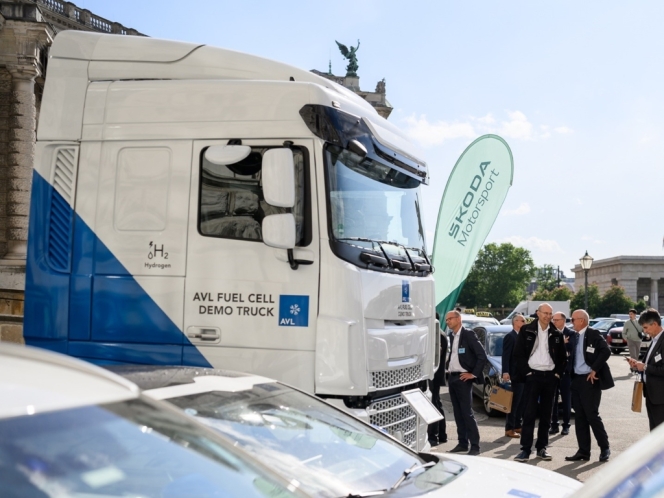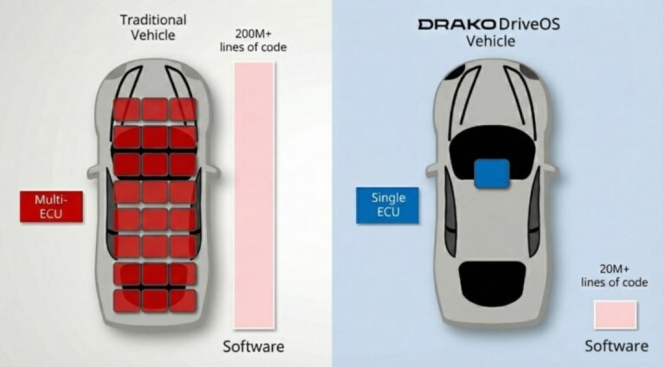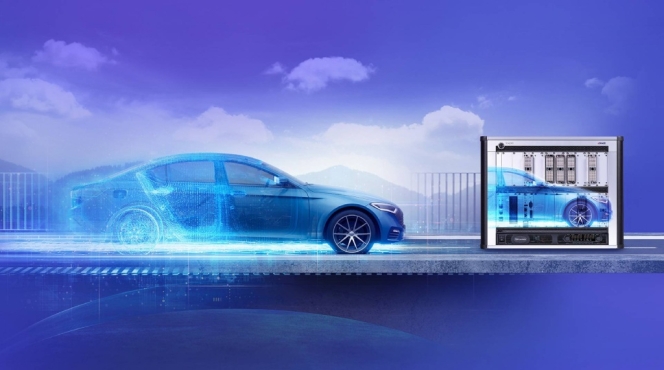- International Vienna Motor Symposium
- Prof. Bernhard Geringer
- Research Institute for Automotive Engineering and Vehicle Engines Stuttgart
- Tobias Stoll
- Frederik Zohm
- MAN Trucks & Bus
- Ego Christ
- Mosolf
- Nils-Erik Meyer
- Akkodis Germany
- Oliver Hrazadera
- Akkodis Austria
- Dorothea Liebig
- Shell Global Solutions
- Hydrogen fuel cell
- Markus Heyn
- Robert Bosch
- Bosch Mobility
- Rolf Dobereiner
- AVL List
- Christian Barba
- Daimler Truck
- Lei Liu
- Cummins
- Yuan Shen
- Zhejiang Geely Holding
- Anreas Wimmer
- Graz University of Technology
- Stefan Loser
- Christ Bitsis
- Southwest Research Institute
- Prof Bernhard Geringer
Combustion Engine Ban For CVs Proves Harder Than Expected
- By MT Bureau
- September 30, 2025

The road to decarbonisation for the commercial vehicle sector is proving to be a complex and challenging journey, with experts highlighting that a straightforward ‘combustion engine ban’ for lorries and other commercial vehicles is far more difficult to implement than for passenger cars.
Following the European Union’s strict CO2 fleet regulations for passenger vehicles, which effectively introduce a ban on combustion engines, stringent greenhouse gas limits are also being rolled out for commercial vehicles.
Experts at the International Vienna Motor Symposium stressed that the industry is racing to develop a wide array of solutions to match the huge diversity of vehicles on the road – from long-distance trucks and small delivery vans to construction and agricultural machinery.
Prof. Bernhard Geringer, Chairman of the International Vienna Motor Symposium, noted that the entire commercial vehicle industry is working on a wide range of solutions needed to match the diversity of vehicle types on the road in view of the developments expected in 2026.
The legislative pressure is intense. Tobias Stoll, a project manager at the Research Institute for Automotive Engineering and Vehicle Engines Stuttgart (FKFS), pointed out that EU legislation stipulates ‘a 45 percent reduction in CO2 emissions by 2030 compared to 2019,’ with manufacturers facing heavy financial penalties for non-compliance.
 This has set the industry's course, with Frederik Zohm (pictured above), Chief Technology Officer at MAN Trucks & Bus, expecting ‘major transformations in the commercial vehicle sector by 2030.’
This has set the industry's course, with Frederik Zohm (pictured above), Chief Technology Officer at MAN Trucks & Bus, expecting ‘major transformations in the commercial vehicle sector by 2030.’
Egon Christ, Chief Strategist at transport and logistics service provider Mosolf, commented: ‘The course has been set.’
However, the existing transport model, especially for long-haul journeys, is heavily reliant on fossil fuels. A typical diesel lorry has a service life of 1.5 million kilometres, often covering up to 200,000 kilometres annually.
Ten years ago, EU forecasts anticipated a dominant role for hydrogen and a minor one for battery-electric trucks. The reality has turned out to be ‘exactly the opposite,’ according to Nils-Erik Meyer, a division manager at Akkodis Germany.
Today, there are only around 10 fuel-cell truck models in the EU, compared to over 40 battery-electric models.
While battery-electric vehicles are currently the most technologically advanced, their widespread use hinges on a massive overhaul of charging infrastructure.
Oliver Hrazdera, site manager at Akkodis Austria, calculated: “For trucks with an electric range of 500 kilometres, the EU needs 2,000 charging points with 650 or 1,000 kilowatts of charging power.”
Batteries, payload and hydrogen’s setbacks
Freight companies prioritise fast turnarounds, which necessitates rapid charging. Dorothea Liebig, a manager at Shell Global Solutions Germany, explained that the maximum charging capacity for trucks ‘is up to eight times higher than for cars.’ She also highlighted the alternative of battery swapping, particularly prevalent in China, where it is ‘fully automated and takes just seven minutes’ at the over 1,200 existing battery replacement stations for trucks.
For many journeys, electric trucks are already viable. Meyer from Akkodis calculated that with a mandatory driver break and recharging, a truck could cover ‘around 630 kilometres are possible in one shift. This covers 90 percent of all journeys.’
However, a key disadvantage of battery-electric lorries is the impact on payload, which is reduced by ‘three to six tonnes for the drive system, mainly due to the batteries,’ according to Meyer. By contrast, hydrogen fuel cells only reduce the payload by one tonne.
Despite this advantage, enthusiasm for fuel cells has cooled in Europe. Markus Heyn, Managing Director of Robert Bosch and Chairman of Bosch Mobility, reported that in Europe and the US, a major hurdle has been the substantial cooling requirements for fuel cells, which need ‘two to two and a half times more cooling surface area than diesel trucks,’.
According to Rolf Dobereiner, product line manager at AVL List. This increased requirement consumes up to 40 kilowatts, reducing driving performance and creating challenges for achieving the high-power outputs needed for heavy-duty haulage.
An unexpected dark horse has emerged: the hydrogen combustion engine. This technology offers compelling benefits, as it doesn't require the costly, high-purity hydrogen needed for fuel cells.
Christian Barba, Senior Manager at Daimler Truck, noted that it saves costs ‘as 80 percent of the parts of a diesel engine can be reused.’
Moreover, Anton Arnberger, Senior Product Manager at AVL List, reported that it ‘is the only zero-emission technology that does not require the use of rare earths.’
The hydrogen engine ‘could achieve the torque and power of a gas or diesel engine,’ said Lei Liu, a manager at Cummins in Beijing. Cummins is testing these vehicles in India, where they are seen as a main pillar for transport decarbonisation, given the lack of a comprehensive power grid required for electric trucks.
Developers are also looking at alternatives to gaseous hydrogen. The trend in Europe is moving towards liquid hydrogen, which allows for longer ranges and is cheaper to store.
Furthermore, Yuan Shen, Chief Developer at Zhejiang Geely Holding in China, proposed methanol as ‘the best carrier of hydrogen,’ as it is a liquid fuel that is easy and safer to store and transport.
Shipping, special vehicles and hybridisation
Decarbonisation is equally challenging on the high seas. Andreas Wimmer, a professor at Graz University of Technology, reported that engines for the 100,000 ocean-going vessels in service today have a life span of over 25 years and cost hundreds of millions of euros.
By 2050, these giants must also be CO2-free. While the combustion engine will remain, fossil heavy fuel oil must be replaced by ammonia (considered an ‘up-and-comer’), methanol or limited-quantity biofuel.
The special vehicle sector – such as construction and agricultural machinery – presents one of the toughest challenges. Stefan Loser, department head at MAN Truck & Bus, noted that a forage harvester would need ‘36 tonnes of batteries to run purely on electricity,’ which is impractical. For such machines, which are used intensively for short periods, hydrogen fuel cells or combustion engines running on synthetic fuels will be essential.
Finally, in the USA, where the decarbonisation of transport is ‘less aggressive than in Europe,’ according to Chris Bitsis, head of development at the Southwest Research Institute, hybridisation (the combination of combustion engines and electric drives) is seen as a key strategy to maintain everyday usability while significantly reducing consumption and emissions.
Summing up the current situation, Prof. Bernhard Geringer concluded that battery-electric drives in commercial vehicles are currently only realistic for distances of up to 500 km and with sufficient fast-charging options. He stressed that the special vehicle sector is particularly difficult, which is where ‘hydrogen fuel cell drives or combustion engines with synthetic fuels come into play.’
Drako Tech Unveils DriveOS With Single-ECUArchitecture
- By MT Bureau
- December 17, 2025

California-based Drako Tech has announced DriveOS with HyperSafety, an automotive operating system designed for single-Electronic Control Unit (ECU) operation. The platform consolidates vehicle subsystems, including control systems, ADAS and digital cockpit, into one unit to reduce costs and enable over-the-air (OTA) updates.
Launched in 2015 and utilised in Drako GTE and Drako Dragon vehicles, DriveOS supports internal combustion, electric and hybrid propulsion systems.
The HyperSafety system provides real-time performance via a single-ECU architecture. According to Drako Tech, the networking backbone facilitates communication four times faster than multi-ECU Time-Sensitive Networking (TSN) automotive Ethernet.
The architecture employs hardware isolation and redundancy to maintain operation during component failures. By using a reduced code footprint and hardware partitioning, the platform aims to limit attack surfaces for cyber security and streamline validation processes.
Industry Integration
Drako Tech provides development environments that run natively on DriveOS:
- Control Systems: Allows engineers to build vehicle controls from Simulink models.
- Digital Cockpit: A system for instrument clusters, navigation and multimedia.
- ADAS: A software foundation for driver assistance with low-latency control.
The platform addresses the complexity of multi-ECU architectures, which typically require separate units for functions such as seats, doors and thermal management. Drako Tech uses a separation kernel to run safety-critical systems alongside non-critical systems, such as infotainment, on the same ECU.
DriveOS introduces hard real-time capabilities to Linux without requiring kernel changes. This allows developers to use Linux libraries and tools for safety-critical systems.
Key features include:
- Performance: 108-microsecond end-to-end performance compared to 514 microseconds for TSN Ethernet.
- Consolidation: The ability to move functions onto a single PC architecture to reduce hardware mass and complexity.
- Redundancy: Hardware-backed isolation ensures faults in one subsystem do not affect driving functions.
- Cloud Integration: Real-time fleet management and diagnostics without creating access paths to control systems.
Dean Drako, CEO, Drako Tech, said, “Nearly half of the cost of new vehicles is tied up in software and electronics. Drako Tech now offers all OEMs worldwide – regardless of size or influence – a definitive leap in their ability to deliver exceptionally safe, connected, AI-enhanced vehicles, with massive cost advantages. We are the first to achieve the ultimate goal – a single-ECU, hard real-time operating system and unified electronics architecture with mixed criticality – while providing OEMs a flexible deployment path.”
dSPACE To Present AI-Driven Test Solutions For SDV At CES 2026
- By MT Bureau
- December 17, 2025

German technology company dSPACE is set to showcase end-to-end test solutions at CES 2026 to assist vehicle manufacturers with the development of software-defined vehicles (SDV).
The company will present a validation portfolio featuring AI-supported software-in-the-loop (SIL) and hardware-in-the-loop (HIL) solutions.
It is exploring how generative and agentic AI technologies can support SIL testing and enable CI/CD pipelines for validation. An exhibit will demonstrate a Visual Studio Code and GitHub Copilot solution for the generation of virtual ECUs for SIL tests.
To meet the requirements of short-cycle development, dSPACE is demonstrating a CI/CT concept presenting a cloud-native validation approach. This includes a GitLab pipeline integrated with VEOS, the dSPACE SIL test software, and SCALEXIO, the HIL test platform.
dSPACE is also presenting a HIL Farm Management Demo designed to increase test efficiency. This displays the availability and utilisation of HIL systems and potential errors to reduce system downtimes and improve the use of test resources.
The technology company will use its test solutions for battery charging and battery management systems to demonstrate end-to-end SIL/HIL validation. Efficiency is increased by reusing test cases, simulation models, bus configurations and user interfaces across both methods. This allows for the demonstration of functions, including conformance tests, with the same layouts and cases.
The company is introducing DARTS ARROW, a radar solution for functional testing of sensors. Developed for end-of-line tests and periodic technical inspections, it validates safety systems such as emergency braking and lane departure warnings by simulating traffic scenarios to detect sensor errors.
For security, dSPACE will present HydraVision, a cybersecurity test framework. Using test case templates, it allows for the integration of cybersecurity tests into the development process to identify and mitigate weak points.
Additionally, the new SCALEXIO Essential system expands the SCALEXIO real-time platform. It is designed for the validation of edge ECUs for mechatronic applications in the automotive, agricultural, and construction machinery sectors. The system includes a software package and is intended as a cost-efficient entry point for HIL testing.
Greaves Cotton Appoints Santosh Singh As Chief Strategy And AI Officer
- By MT Bureau
- December 16, 2025

Greaves Cotton has appointed Santosh Singh as Chief Strategy and AI Officer. He will be based in Mumbai and will lead strategy, transformation, AI-led enterprise capability building and business excellence for the Greaves Cotton Group.
Singh comes with over two decades of experience in strategy, business excellence, innovation, and AI-led enterprise transformation. He joins Greaves Cotton from Tata Technologies (TTL), where he served as Global Head – Marketing and Business Excellence. During his tenure there, he co-led the enterprise GenAI roadmap and developed use cases focused on customer engagement and productivity.
His primary mandate is to drive the Greaves.NEXT strategy, the company’s roadmap for growth across the energy, mobility and industrial solutions sectors.
In his new role, Singh will focus on accelerating growth for Greaves Technologies (GTL), developing an enterprise-wide AI roadmap, and establishing partnerships with hyperscalers and AI labs.
Parag Satpute, Managing Director & Group CEO, Greaves Cotton, said, “We are pleased to welcome Santosh to the leadership team. His extensive expertise in strategy, digital transformation, and AI will play a significant role in shaping Greaves’ next phase of growth. His global experience will further strengthen our innovation roadmap and support our long-term business priorities.”
Singh will also work across business units to incubate and scale growth vectors and lead business excellence initiatives.
Luminar Sells Photonics Division To Quantum Computing Inc For $110 Million
- By MT Bureau
- December 16, 2025

Luminar Technologies, Inc., a global technology company advancing safety, security and autonomy across various sectors, has announced it has agreed to sell its wholly owned subsidiary, Luminar Semiconductor, Inc. (LSI), to Quantum Computing Inc. (QCi) for USD 110 million in an all-cash transaction.
QCi is an integrated photonics and quantum optics technology company focused on photonics-driven technologies and sensing applications. LSI's innovation platform and engineering depth align with QCi’s strategic priorities in optical systems, chip-scale innovation and photonic architectures. The acquisition is expected to position LSI to grow and capitalise on the demand for photonics solutions.
Paul Ricci, CEO, Luminar, said, "We are pleased to partner with QCi as they continue to accelerate their photonics roadmap. QCi’s focus on photonics-driven technologies provides an aligned platform for LSI to expand its customer base, accelerate growth opportunities, and invest in markets where long-term demand for high-reliability optical systems is increasing. We are incredibly proud of the LSI team for the progress they have made to reach this milestone, and we are excited for the opportunities ahead for LSI under QCi’s ownership.”
Yuping Huang, CEO, Quantum Computing Inc, said, "I’m excited about the opportunity to partner with the exceptional team and valued customers of LSI. There is clear strategic alignment and shared vision between our organizations, creating strong momentum from day one. Following the closing, we will move quickly to invest in and scale LSI’s existing business, while bringing our teams together to accelerate our quantum photonics roadmap. This is a powerful combination, and I’m energized by what we will achieve together.”
In a separate announcement, Luminar announced that it has initiated voluntary chapter 11 cases in the U.S. Bankruptcy Court for the Southern District of Texas. LSI is not a debtor in the chapter 11 cases and is operating in the ordinary course. Because LSI is a subsidiary of Luminar, the transaction will require the approval of the bankruptcy court via a Section 363 sale process, which the parties expect to receive by the end of January 2026, subject to closing conditions.






Comments (0)
ADD COMMENT